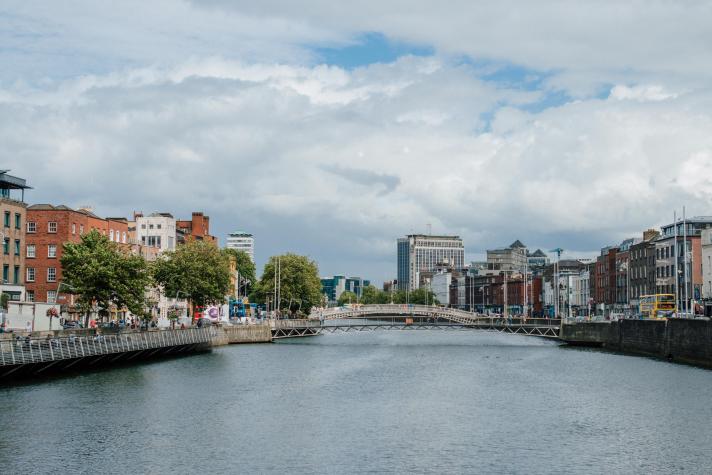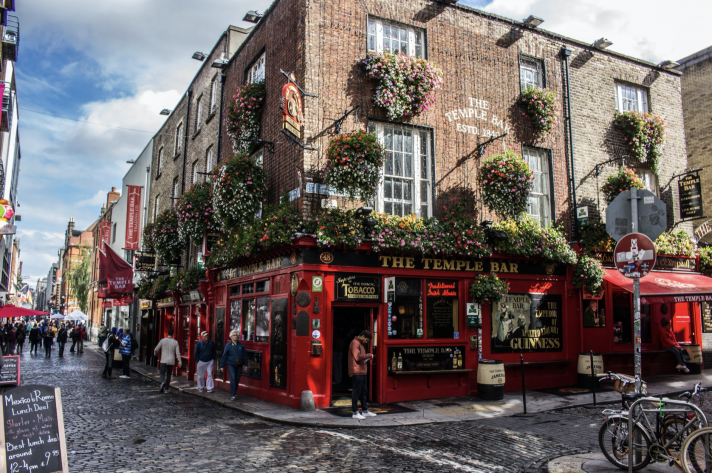Cultural treasure chest, filled with an abundance of history
As the capital of Ireland, Dublin boasts a population of 1.7 million in the urban region. Situated on the river Liffey on the east coast of Ireland the city grew out of a Gaelic settlement into a second, Viking settlement and eventually the principal settlement on the Island following the Norman invasion in the 12th century. Throughout Ireland’s history, Dublin has served as the administrative and political heart of Ireland all the way through until the partition of Ireland in 1922. Dublin is one of Ireland’s most popular tourism destinations registering 8.6 million visitors in the year 2019 which supporter 68,000 jobs in the tourism industry in 2019. Dublin is Europe’s only capital to have received a UNESCO Bay Biosphere and City of Literature designation as well as being voted the world’s 6th friendliest city in 2019.
Digitalisation at the heart of the city tourism
In 2020, the Dublin City Council, Fáilte Ireland and Smart Dublin came together to launch a new strategic partnership: the city’s first and very own Smart Tourism Programme. The aim of this programme is to make Dublin City a smart tourism destination and to capitalise on the opportunity to blend the city’s expertise in technology, tourism and smart city collaboration. By centralising their smart tourism efforts, Dublin has begun a series of projects and investments into key ideas and infrastructures designed to enhance the visitor experience through progressive collaboration with both internal and external partners. Digitalisation is at the heart of the city tourism recovery plan, with the development of a world class immersive city-wide digital trails platform that will help bring the city’s stories and the communities to life. By using open data, Dublin is creating the “Culture Near You Map”, an interactive user experience that gives visitors and residents the opportunity to view up-to-date information about things to do, culture, people and places which can all be accessed through the web app and unveils the wealth of attractions that the city has to offer at the touch of a button. Since Dublin is a cultural treasure chest, filled with an abundance of history and culture, the city is capitalising on this with museums such as EPIC; a high-tech visitor attraction housed in the historic vaults of Dublin’s old Docklands. EPIC is arranged in 20 galleries which explores Ireland’s history of emigration through a sustainable model of exhibition allowing for a far greater degree of developing and protecting the history than before.
The city of poets and writers
From James Joyce to William Butler Yeats, Oscar Wilde and Jonathan Swift Dublin boasts a wide array of literary icons amongst its former residents. The city has always been home to poets and artists that have contributed to the global stage of the arts. With a multitude of galleries and 43 museums and an array of theatres and music halls, with Handel’s Messiah being first performed in the city in 1742. To compliment this, Dublin has become one of Europe’s most youthful cities with an estimated 50% of the population being under 25. This is due to the abundance of universities in the city including the history Trinity College founded in 1592. From its early Viking origins to its modern push into the world of smart tourism Dublin is at the forefront of creating a unique visitor experience that takes into account both where it has come from and where it wants to go. In Irish the saying céad míle fáilte or One Hundred Thousand Welcomes invites each and every visitor to make themselves at home.

Dublin Docklands — Freedom in the City
Dublin’s Docklands offers the visitor the freedom and space to explore this vibrant part of the city. The Docklands themselves, separated by the gently flowing River Liffey, has been built over many generations and continues to develop today. It is a place not set in stone but is still connected to its history, while also looking to the future. Only a short distance from the City Centre it has been home to Vikings and dockers, a leaving point for emigrants and a welcoming hub for tech start-ups. It is a place that flows with ideas and opportunities, connected by its heritage and its innovation.
There is so much to see and discover in Dublin’s Docklands, from Ireland’s smallest museum to the magical creatures hidden atop The Custom House. This circular trail can be started at any of its seven stops and with a range of activities it’s suitable for all the family to take part in and enjoy.
Find out more. https://epicchq.com/visit/




